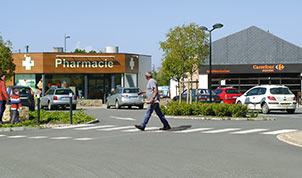TORN ACL RECOVERY TIME
If you are scheduled for ACL surgery, it is interesting for you to understand what you are about to go through, the time required to fully recover from it and of course what you can do to optimize the healing process in order fully reacquire the functionality of your knee.
This article will provide you with a timeline and tips that will help you recover quickly and safely from ACL surgery.
First two weeks after surgery
This phase is the most important during ACL recovery because it is precisely during this time that the knee is most vulnerable. The ACL reconstruction surgery techniques that are mostly performed today indeed require the harvesting of a tendon (patellar tendon or a hamstring tendon) which is to be used as the ACL graft. This process makes ACL surgery a traumatic experience for your muscles, ligaments and other tissues and therefore, your body will respond with inflammation. Consequently, you will most likely experience pain, swelling and excess fluid buildup around your knee joint.
Following the surgery, you should note that the rehabilitation process immediately starts with prescribed exercise that need to be done daily. However, you will not be able to bear weight on the affected leg, so plan on providing yourself with crutches and limiting your mobility.
Two to six weeks after surgery
During this time, you will be again able to bear your weight on both legs but the range of movement of your knee will still be limited as the tissues are still healing. Some activities such as driving might be resumed during this time depending on which leg underwent ACL reconstruction surgery. At this point, your physical therapist will focus on helping you regain the full range of motion of your knee.
However, with the knee still being very vulnerable at this stage, wearing a protective knee brace can be an option in order to limit the stress applied on the ACL graft, which is still slowly healing.
Six weeks to three months after surgery
New low-impact activities such as cycling, swimming and rowing become possible during this time frame as the knee continues to grow stronger. You might now also be able to resume activities such as light jogging if your physical therapist thinks you are ready.
At this point, running a diagnostic with an arthrometer such as the GNRB is essential, as it will give you and your physiotherapist an idea on the state of the ACL graft. The objective results provided with this type of assessment indeed allow determining the correct path to take in order to assure knee stability.
Three to six months after surgery
The physiotherapist usually continue recommending strengthening exercises to support the connective tissus is the knee. Additional exercises to protect the ACL and help prevent future injuries may also be applied.
Six months after the surgery, athletic activity may be considered again but usually doctors recommend the use of a supportive brace during the two years following surgery. Again, this can be decided after running an assessment test with the GNRB on the new ACL.



